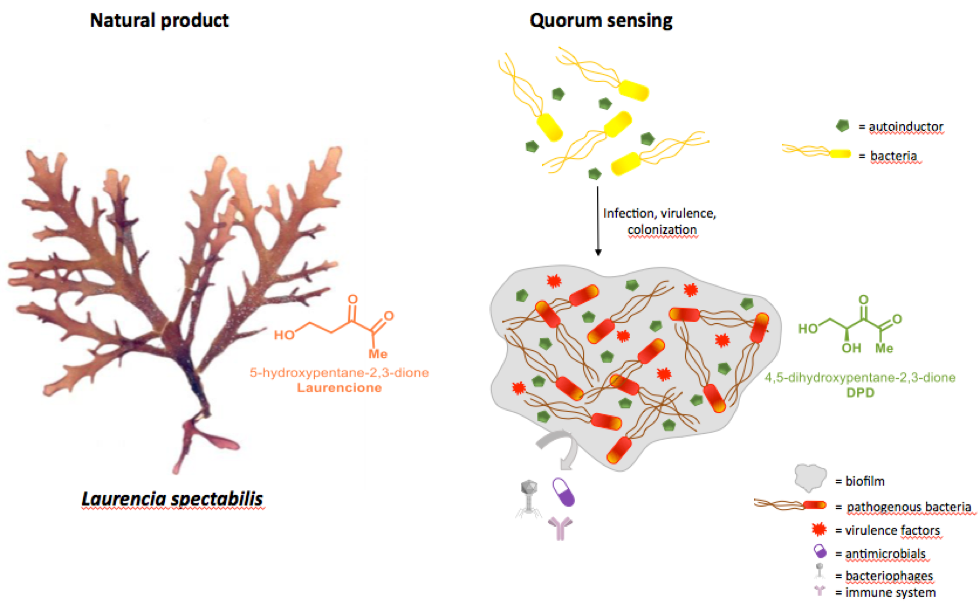Antibiotic resistance is a major problem for fighting pathogenic bacteria. As many bacteria possess the MEP pathway for isoprenoid biosynthesis, which is absent in human, this metabolic route is a target for the design of novel antibacterial agents. Most pathogenic bacteria are forming biofilms, which enhance their resistance towards antibiotics. Biofilm formation is triggered by quorum-sensing factors, which in Gram-negative bacteria are small molecules such as (S)-4,5-dihydroxy-2,3-pentanedione, which shows a close structural similarity and chemical reactivity with those of laurencione (5-hydroxy-2,3-pentanedione), a metabolite found by our group while investigating the first enzymatic step of the MEP pathway. This research is focused on the unknown biochemistry of laurencione and should result in an improved knowledge on bacteria intra- and inter- species communication mechanisms. The long-term goal is to develop a strategy towards novel antibacterials based on compounds interfering with this QS to inhibit e.g. biofilm formation.

